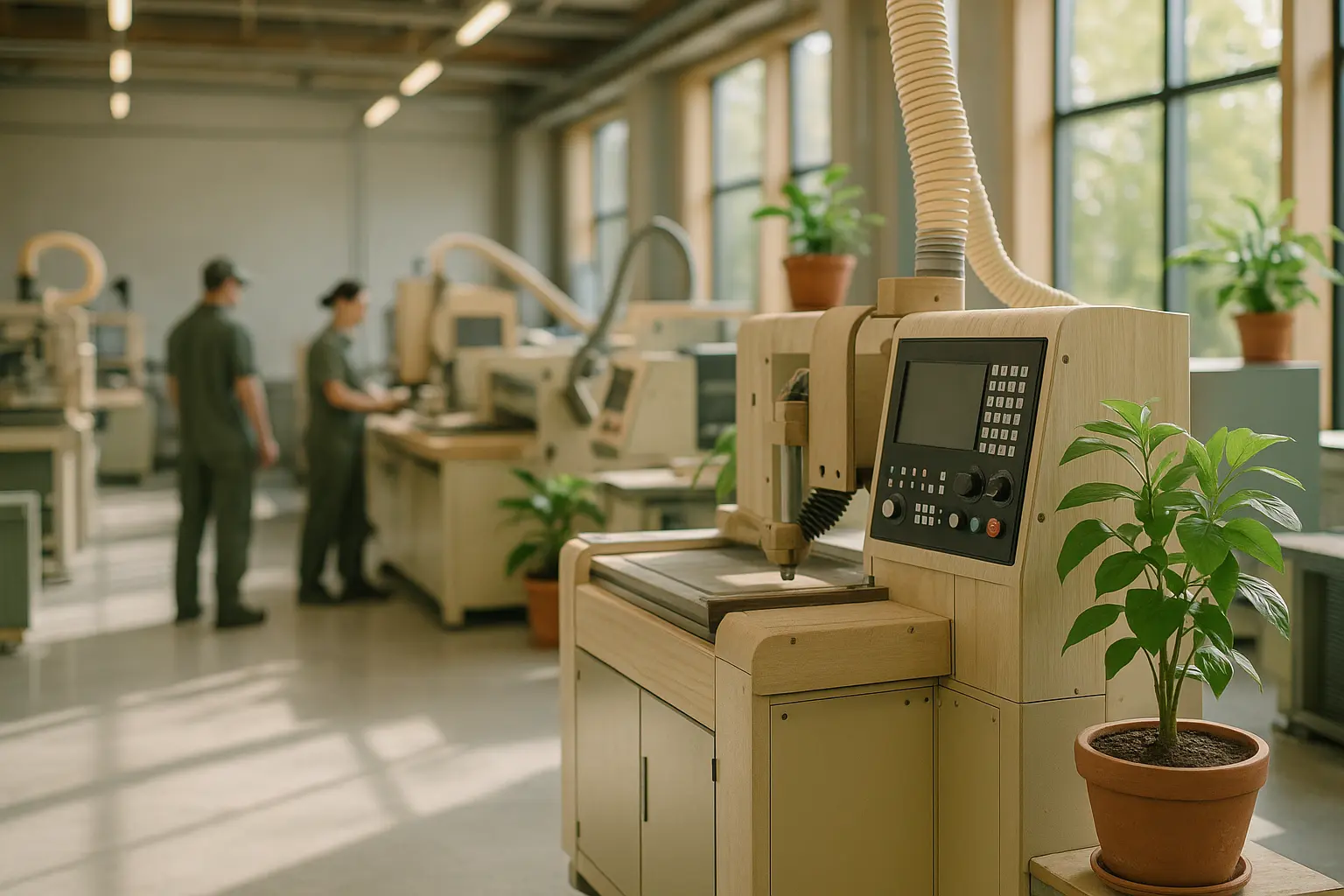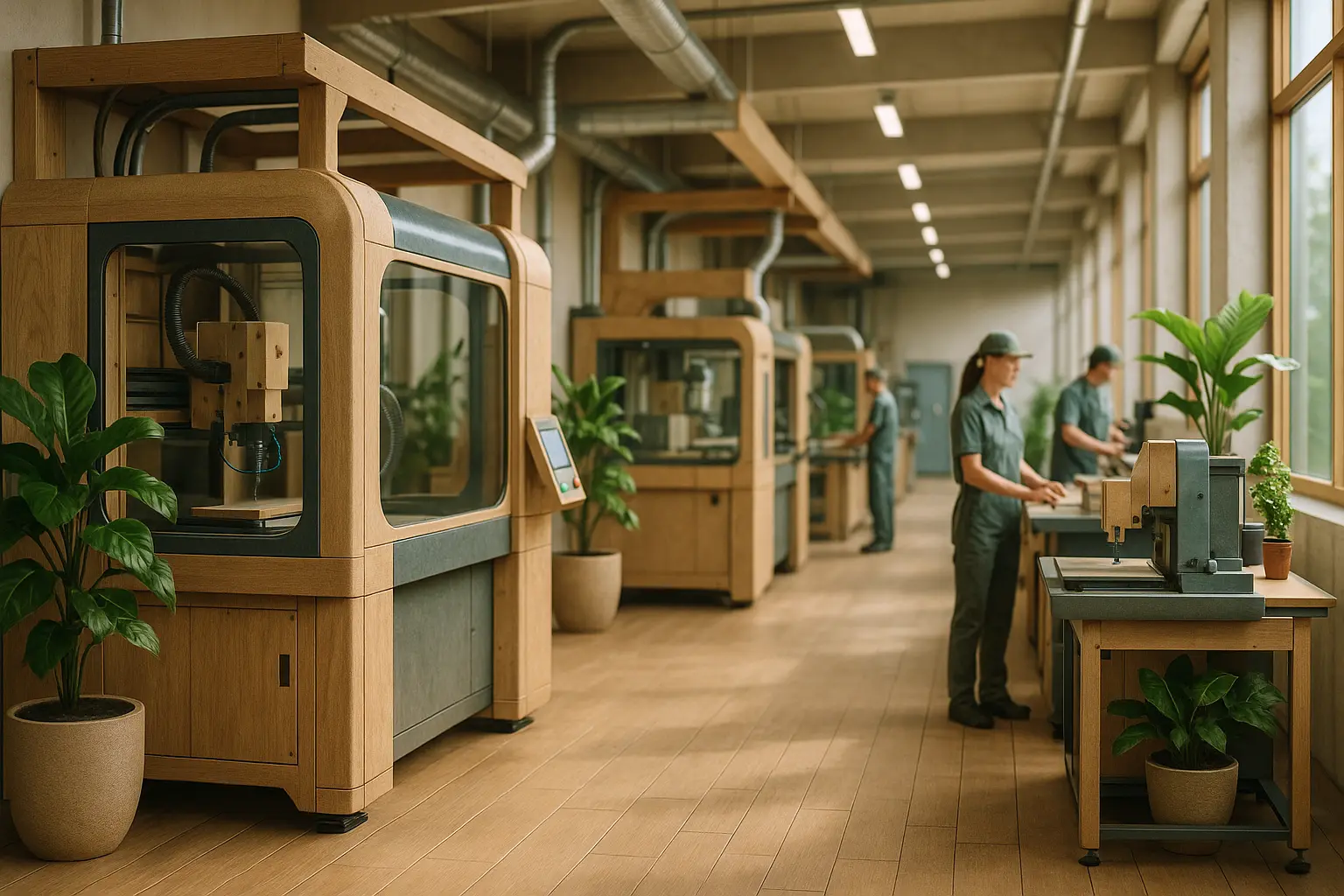In the ever-evolving landscape of manufacturing and technology, embracing sustainability has become more than just a trend—it’s a necessity. As we stand on the brink of unprecedented technological advancements, the need for eco-friendly approaches in manufacturing is more urgent than ever. Today, we’re diving deep into the world of sustainable manufacturing practices, exploring their impact, benefits, and the innovations driving this transformation. Join us as we unravel how these practices are shaping not just industries, but also the world around us.
The Foundation of Sustainable Manufacturing
The crux of sustainable manufacturing lies in balancing economic growth with environmental responsibility. But what exactly defines sustainable manufacturing? At its core, it refers to the creation of manufactured products through economically-sound processes that minimize negative environmental impacts while conserving energy and natural resources.
In a world where climate change and resource depletion threaten our collective future, sustainable manufacturing practices aim to reduce waste, improve energy efficiency, and utilize clean technologies. Our journey begins with understanding the pivotal role these practices play in modern industries.
The Rise of Green Technologies
A significant shift toward green technologies has paved the way for manufacturing practices that prioritize planetary health. These technologies offer innovative solutions, from solar-powered manufacturing plants to eco-friendly packaging. The adoption of such technologies not only reduces carbon footprints but also enhances operational efficiency and cost-effectiveness.
Moreover, renewable energy sources like wind and solar have become integral to sustainable manufacturing. By harnessing these natural resources, companies can drastically cut down on emissions and decrease their dependency on fossil fuels.
Circular Economy: Closing the Loop
Another cornerstone of sustainable manufacturing is the circular economy, a model that goes beyond the traditional linear approach of ‘take, make, dispose.’ In a circular economy, waste is reduced, reused, or recycled to create a closed-loop system. This not only minimizes environmental degradation but also fosters innovation by reimagining waste as a valuable resource.
By incorporating a circular model, manufacturers can design products with end-of-life considerations, ensuring components are either biodegradable or recyclable. Such strategies significantly reduce landfill contributions and promote a more sustainable production cycle.
Innovations Driving Sustainable Practices
Today, sustainable manufacturing is being propelled forward by cutting-edge innovations and technological advancements that are reshaping how industries operate. Let’s delve into some of the transformative technologies and methods that are setting the stage for a sustainable future.
Smart Manufacturing and IoT Integration
The advent of the Internet of Things (IoT) has revolutionized manufacturing, introducing smart systems that enhance operational efficiency and resource utilization. By integrating IoT, manufacturers can monitor and optimize energy use in real-time, leading to significant energy savings and reduced emissions.
Smart manufacturing involves the use of data analytics, machine learning, and automation to streamline processes, reduce waste, and improve quality control. Through predictive maintenance, organizations can also prevent equipment failures, thereby prolonging machinery life and reducing resource consumption.
Additive Manufacturing and 3D Printing
Another groundbreaking advancement is additive manufacturing, commonly known as 3D printing. This technology has revolutionized the way products are designed and produced, allowing for customization and precision. By utilizing only the necessary materials, it significantly reduces waste and promotes resource efficiency.
3D printing also enables the use of recycled materials in production, emphasizing sustainability. Products can be manufactured on-demand, reducing inventory requirements and transportation emissions, further contributing to sustainable practices.
Biomimicry: Nature-Inspired Design
Biomimicry, the practice of drawing inspiration from nature’s design solutions, has gained traction in sustainable manufacturing. By mimicking biological processes, manufacturers can develop materials and products that are not only efficient but also harmonious with the environment.
For instance, utilizing materials that mimic the self-cleaning properties of a lotus leaf or the structural efficiency of a honeycomb can lead to innovations that enhance product durability while minimizing environmental impact.

Challenges and Opportunities in Implementation
While the path to sustainable manufacturing is paved with innovative solutions, it is not without its challenges. As industries endeavor to transition towards sustainability, they must navigate a landscape fraught with both hurdles and opportunities.
Overcoming Barriers to Adoption
One of the foremost challenges is the high initial costs associated with sustainable technologies. While the long-term benefits in terms of cost savings and environmental impact are significant, the upfront investment remains a deterrent for many small and medium-sized enterprises.
Moreover, there is often a knowledge gap in understanding and implementing sustainable practices, necessitating comprehensive training and education programs. Companies need to invest in skill development to empower their workforce to adapt to new technologies and processes.
Regulatory Compliance and Incentives
The regulatory landscape plays a crucial role in promoting sustainability. Governments worldwide are increasingly enacting policies that encourage environmentally responsible practices. Compliance with such regulations can be challenging, but it also presents opportunities for innovation and competitive advantage.
Incentives such as tax breaks, grants, and subsidies for adopting green technologies can alleviate financial burdens and accelerate the transition to sustainable manufacturing. By taking advantage of these opportunities, companies can not only enhance their reputation but also drive industry-wide change.
Consumer Demand and Market Trends
The growing consumer demand for sustainable products has created a significant opportunity for manufacturers willing to embrace eco-friendly practices. Today’s consumers are more environmentally conscious and increasingly prefer brands that demonstrate a commitment to sustainability.
By aligning with these market trends, businesses can cultivate brand loyalty and tap into new consumer bases. Transparency in production processes and sustainable sourcing can further enhance a brand’s appeal, leading to increased market share and profitability.
Conclusion: Charting a Sustainable Path Forward
As we stand at the crossroads of innovation and sustainability, the path we choose will define the future of manufacturing. Embracing sustainable practices is no longer optional; it is imperative for economic viability and ecological preservation. By integrating green technologies, adopting circular models, and harnessing innovations like IoT and 3D printing, we can forge a sustainable path forward.
The journey towards sustainable manufacturing is a collective endeavor. As stakeholders—be it businesses, governments, or consumers—we must work together to overcome challenges and seize opportunities. Through collaboration, education, and innovation, we can ensure that the manufacturing industry not only meets the needs of today but also safeguards the planet for future generations.
Let us commit to a future where manufacturing practices are synonymous with sustainability, where progress and environmental stewardship go hand in hand. Together, we can create a world where economic growth lives in harmony with the natural world, ensuring prosperity for all.
FAQ
What are sustainable manufacturing practices?
Sustainable manufacturing practices refer to methods and processes that minimize negative environmental impacts, conserve energy and natural resources, and are safe for employees, communities, and consumers.
How do sustainable practices benefit manufacturers?
By adopting sustainable practices, manufacturers can reduce costs through improved efficiency, gain a competitive edge, foster innovation, and enhance their brand reputation by demonstrating a commitment to environmental stewardship.
What are some examples of sustainable manufacturing techniques?
Examples include using renewable energy sources, recycling materials, optimizing resource efficiency, reducing waste, and implementing eco-friendly technologies in production processes.
Why is energy management crucial in sustainable manufacturing?
Effective energy management helps reduce greenhouse gas emissions and lowers operational costs. It involves tracking energy use, optimizing processes for energy efficiency, and investing in renewable energy sources.
How can manufacturers ensure the sustainability of their supply chains?
Manufacturers can ensure supply chain sustainability by sourcing materials responsibly, collaborating with suppliers who uphold sustainable practices, and regularly assessing the environmental impact of their supply chain processes.


